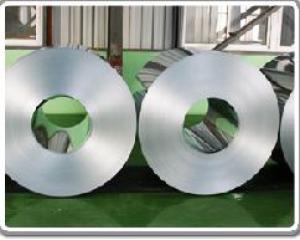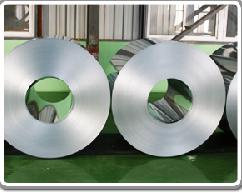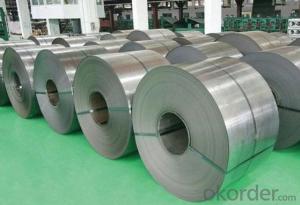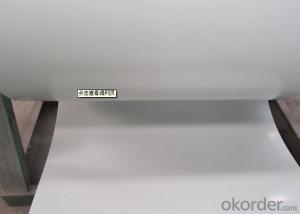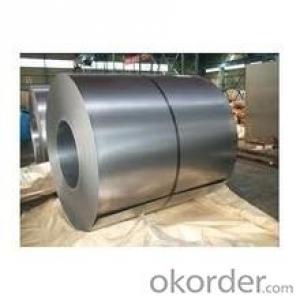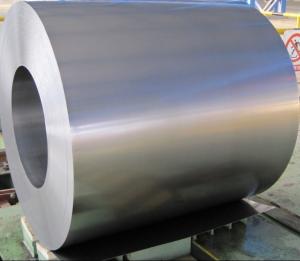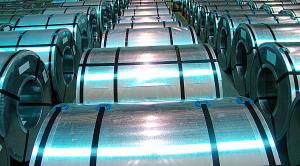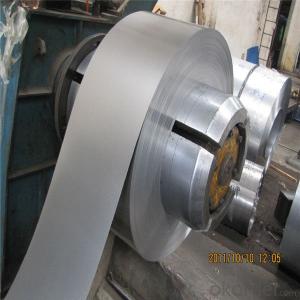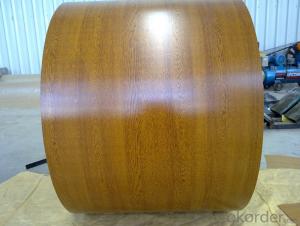Aluzinc steel coil &antifinger galvalume steel coil
- Loading Port:
- China Main Port
- Payment Terms:
- TT OR LC
- Min Order Qty:
- -
- Supply Capability:
- -
OKorder Service Pledge
OKorder Financial Service
You Might Also Like
Quick Details
| Standard: | AISI,ASTM,BS,DIN,GB,JIS | Grade: | SGLCH;DX51D+AZ,DX53D+AZ | Thickness: | 0.14-4mm |
| Place of Origin: | Tianjin China (Mainland) | Brand Name: | brilliant steel | Model Number: | various |
| Type: | Steel Coil | Technique: | Cold Rolled | Surface Treatment: | Galvanized |
| Application: | Container Plate | Special Use: | High-strength Steel Plate | Width: | 600-1500mm |
| Length: | in coil | Zinc coat: | 40-275g | Coil weght: | 4-8 tons |
| Coil ID: | 508mm or 610mm | Surface structue: | noirmal spangle,no spangle,skin-passed spangle | aftertreatment mode: | normal passivation,environmental passivation,finger print resistance |
| surface: | chromated;oiled;dry,skin-pass and non-skin pass |
Packaging & Delivery
| Packaging Detail: | standdard export packaging or as request |
| Delivery Detail: | 25 days |
Specifications
1.China manufacturer
2.Best service
3.Fast delivery
4.Quantity assured
1.Specification
Galvalume steel coil | ||
Brand Name: | TJBT-GL | |
Standard: | ASTM A792; | |
Grade: | SGLCC/ SGLCH/DX51D+AZ/DX53D+AZ/S220GD-550GD | |
Size: | Thickness: | 0.17-2.0mm |
Width: | ≤ 1250mm | |
Length: | Coil or client’s requirements | |
AluZinc Coating: | 30g/m2 to 200g/m2, | |
Spangle: | regular spangle/minimize spangle and zero spangle | |
Coil ID: | 508 /610mm | |
Coil Weight: | 3-10 Tons | |
Usage : |
Infrastructure : Roofing; External Siding; Garage; Shutter
Household Appliances :Oven; Air-Conditioning Ventilation System; Solar Water Heater; Electronics;
Automobile : Mobile Muffler; Vent Pipe; Catalysis Converter Heater Shield; Bottom Accessories;
Industrial Instrument : Electric Control Cabinet; Industrial Freezer Chest; Dispenser | |
The plating coat of Aluminium-Zinc Alloy Armor plate is Zn-Al alloy, and its composition is 55% Al, 43.3% Zn and 1.6% Si. The plate is of smooth surface and excellent corrosion resistance of the atmosphere, which is 2 to 6 times higher than hot-dip galvanized sheet of the same thickness of plating coat. After through three processes, including payoff reel, crop shear and welding, enter into the continuous annealing furnace. During the annealing process, strips are heated closer to the recrystallizing temperature, and then heated to 20~50°C above the recrystallizing temperature in the reducing furnace. After keeping the same temperature for 170s, strips are naturally cooled to the normal temperature in the slow cooling process. Afterward, strips enter into the zinc pot through the elephant’s trunk and begin in the hot-dip coating process. The optimum temperature range of the plating coat is 630°C~660°C. Coated with aluminium-zinc alloy, strips enter into the cooling tower by the steady roll and air knife. After fast cooled with wind or water, they are directly produced into Al-Zn armor plates. The general rate of cooling is 30°C/s or so, and strips are cooled to about 60°C.
2.Memical composotion and production process
Chemical Requiremetns for structure steel | ||||||||||||
Composition, %-Heat Analysis Element, maximum, unless otherwise Shown | ||||||||||||
Designation | C | Mn | P | S | Cu | Ni | Cr | Mo | V | Cb | TiA | NB |
G230 | 0.20 | 1.35 | 0.04 | 0.04 | 0.25 | 0.20 | 0.15 | 0.06 | 0.008 | 0.008 | 0.025 | … |
G255 | 0.20 | 1.35 | 0.10 | 0.04 | 0.25 | 0.20 | 0.15 | 0.06 | 0.008 | 0.008 | 0.025 | … |
G275 | 0.25 | 1.35 | 0.10 | 0.04 | 0.25 | 0.20 | 0.15 | 0.06 | 0.008 | 0.008 | 0.025 | … |
G340 | 0.25 | 1.35 | 0.20 | 0.04 | 0.25 | 0.20 | 0.15 | 0.06 | 0.008 | 0.008 | 0.025 | … |
G550 | 0.20 | 1.35 | 0.04 | 0.04 | 0.25 | 0.20 | 0.15 | 0.06 | 0.008 | 0.015 | 0.025 | … |
- Q: i'm looking into buying a stainless steel ring for somebody as a gift.i'm on a budget (heh) and the ring is about $50.will it rust or tarnish? it'd be embarrassing if i gave it to someone, and it begins rusting :Pthanks
- Stainless steel is a generic term for a huge variety of different alloys. In manufacturing, each steel has different numbers, etc that they go by. Some steel sold as being stainless actually is not. It rusts, like the cheap kitchen knives you see that are left in the sink too long. However, the stainless in jewelry is pretty legit. Overpriced, but legit. It will not tarnish, but it won't stay shiny forever. It might get a little less glossy over time. When it does get re-polished, it takes a long time to do it. But it will not turn black or rust. Good luck.
- Q: I am in the market for a good hunting knife under $100. I am primarily looking for a knife that will keep it's edge. What type of steel should I be looking for?
- Don't know much about steels, but apparently SV30 is the toughest son of ore you can look for, and it's so tough I've heard of knife makers rejecting it for softer steel. Look for Gerber and Buck for low end SV30 knives under $100.
- Q: I was just thinking, is their a way to make steel qualities inherent in concrete, therefore eliminating the need for re bar?
- Mixing hot steel with liquid concrete would be very hazardous to your health. Steal in a molten state would flash the water in the concrete mix into steam and the steam would blow concrete and steel out of your mold. This would be about like being shot with a shotgun. This occurred in a steel mill near me some years ago on a rainy day when some steel splashed from a ladle and landed on a puddle of water, part of the siding was blown off the building and one worker sent to the hospital.
- Q: What are the different methods of uncoiling steel coils?
- Uncoiling steel coils can be done in several ways, depending on the specific requirements and available equipment. Some commonly used methods are: 1. Manual uncoiling: This method involves manually unwinding the coil using a bar or rod inserted through the inner diameter. It is suitable for smaller coils or when other methods are not accessible. 2. Mandrel uncoiling: A mandrel, a cylindrical tool, supports the inner diameter of the coil and enables free rotation. The coil is placed on the mandrel and rotated to unwind the steel. 3. Decoiler machine uncoiling: Designed specifically for uncoiling steel coils, these machines consist of a mandrel or drum to hold the coil. They also include a motorized mechanism to control the speed of unwinding. Decoilers are suitable for larger and heavier coils, making them ideal for industrial applications. 4. Straightener-feeder uncoiling: This method is utilized when the steel coil needs to be straightened and fed into a production line simultaneously. The coil passes through straightening rollers to remove any curvature before being fed into the subsequent processing equipment. 5. Recoiler uncoiling: Recoilers are used when the steel coil needs to be rewound into a new coil. The original coil is uncoiled using one of the previously mentioned methods, and then the steel is rewound onto a new mandrel or drum to create a smaller coil. It is important to consider factors such as the size and weight of the coil, desired level of automation, and specific production requirements when choosing an uncoiling method.
- Q: My daughter wants a pair of steel toe cap boots for around the horses but wants them warm, so ideally fur lined etc. Does anybody know where I could purchase them as everywhere I look its only one or the other, cant get steel with fur lining. Very frustrating. I live in the uk. Many thanks.
- Steel toe boots around horses is a big no-no! horses are heavy enough to bend the steel and that could possibly cut into her foot. Even if it doesn't cut into her foot, the boot is ruined after the first time a horse does step on it. On the other hand, Mountain Horse and Ariat both make great winter riding boots.
- Q: can anyone help me to find any webpage about lists/types of stainless steel?
- Types of stainless steel There are over 150 grades of stainless steel, of which fifteen are most common. The AISI (American Iron and Steel Institute) defines the following grades among others: - 200 Series—austenitic iron-chromium-nickel-manganese alloys - 300 Series—austenitic iron-chromium-nickel alloys Type 301—highly ductile, for formed products. Also hardens rapidly during mechanical working. Type 303—free machining version of 304 via addition of sulfur Type 304—the most common; the classic 18/8 stainless steel Type 316—Alloy addition of molybdenum to prevent specific forms of corrosion - 400 Series—ferritic and martensitic alloys.
- Q: I am wondering if i can use my western guitar as a kind of steel-guitar, read something about it on Wikipedia.
- If you decide to get a true pedal steel, plan on spending some big money. Look on eBay for a Carter Starter. It will be the best guitar to start on...and not outgrow too fast.
- Q: How are steel coils inspected for defects after recoiling?
- Steel coils are inspected for defects after recoiling through a thorough visual examination and non-destructive testing techniques such as ultrasonic or magnetic particle inspections. These methods identify any surface imperfections, cracks, or abnormalities in the steel coils to ensure their quality and integrity.
- Q: the difference between the original steel and mild steel from percentage of carbon
- As the first answers suggest, the prolbem is that these terms are not specific, they are not scientifically or technically defined. This is like asking: what is the difference between a four door car and a sedan? There are hundreds of steel alloys ranging from Fe + a little C + very little else to alloy and tool steels with significant amounts of Cr, Ni, Si, and a number of other elements + C. And... for any given steel alloy, there are many different ways to heat treat it. A given piece of steel can be heat treated so hard and brittle that it could shatter like glass and then it could be heat treated to make it into a spring or heat treated to make it stretch like taffy. If you really want to understand steels, yes, there are lots of books on sword making (some written by people who actually understand steels) but... you need to study metallurgy. There are graduate level courses just on the metallurgy of steels. Of course to understand this course you need to understand a whole lot of fundamental metallurgy. All this stuff on steel makes perfect sense because, in terms of weight (tonage) produced, steel is, hands down, nothing else remotely comes close, the most important metal humans have.
- Q: Can steel coils be used in electrical applications?
- Certainly, electrical applications can make use of steel coils. In the realm of electrical circuits, steel coils often serve as magnetic cores in transformers and inductors, which are indispensable components. The steel employed in these coils typically consists of high-quality electrical steel, possessing distinct magnetic attributes, including low core losses and high permeability. These attributes empower the steel coils to efficiently transmit electrical energy between various circuit components. Furthermore, steel coils can also find utility in other electrical applications, such as the construction of electric motors and generators. Taking everything into account, steel coils are extensively employed in electrical applications due to their magnetic properties and their capacity to handle high currents and temperatures.
Send your message to us
Aluzinc steel coil &antifinger galvalume steel coil
- Loading Port:
- China Main Port
- Payment Terms:
- TT OR LC
- Min Order Qty:
- -
- Supply Capability:
- -
OKorder Service Pledge
OKorder Financial Service
Similar products
Hot products
Hot Searches
Related keywords
